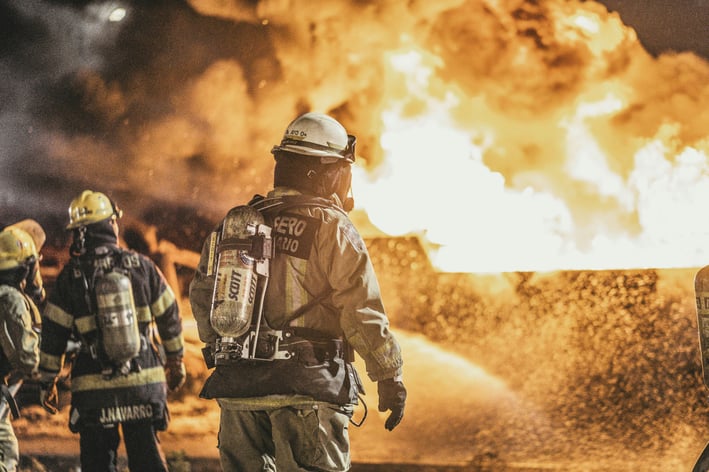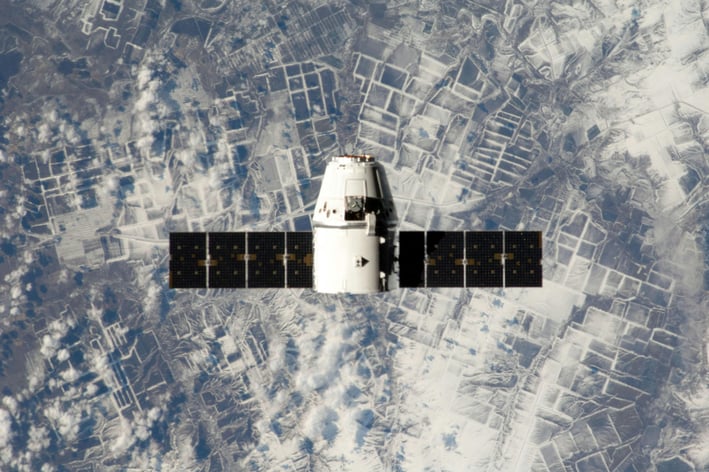Telecommunications in Disaster Recovery: Lessons from Recent Natural Disasters
When disaster strikes, resilient telecommunications systems become the backbone of emergency response, ensuring coordination and saving lives.
APPLICATIONS
Miguel Millan Montanes
2/12/20253 min read
When disaster strikes, reliable telecommunications systems become the invisible lifeline holding together rescue efforts, and resource coordination. From earthquakes and hurricanes to wildfires and floods, recent natural disasters have highlighted both the strengths and vulnerabilities of modern telecommunications infrastructure. Each event offers critical lessons on how we can build more resilient systems to better withstand future crises.
The Critical Role of Telecommunications in Disaster Recovery:
Communication is the foundation of any effective disaster response. Emergency services rely on telecommunications to coordinate rescue missions, mobilize resources, and keep responders informed about evolving threats. Affected communities depend on these networks to access emergency assistance and stay updated with accurate information.
During disasters, conventional communication channels such as mobile networks, landlines, and internet services often fail due to infrastructure damage, power outages, or network congestion. When these systems go offline, emergency responders face delays, confusion, and reduced situational awareness — consequences that can cost lives.


Case Study: Hurricane Maria (2017) — Puerto Rico
Hurricane Maria devastated Puerto Rico, crippling its telecommunications infrastructure. Nearly 95% of cell towers were knocked out (GAO, 2021), leaving residents and emergency responders without reliable communication. The inability to coordinate effectively slowed rescue efforts and prolonged the delivery of aid. Hospitals were left without the means to contact emergency services, and families were cut off from loved ones. Relief agencies struggled to determine the hardest-hit areas due to the lack of information.
Satellite phones and portable communication systems, such as deployable LTE units and radio networks, proved invaluable in bridging communication gaps. Military and emergency teams equipped with satellite phones were able to coordinate supply drops and medical evacuations. Deployable LTE units helped restore limited cellular coverage in key areas, enabling residents to reconnect with emergency services and their families.


Key Lessons from Hurricane Maria and Other Disasters
Redundancy is vital: Disaster preparedness must prioritize backup systems that function independently of terrestrial infrastructure. Satellite phones, deployable emergency Mobile Radio Base Stations, and/or LTE units ensure that communication remains possible even when traditional networks fail.
Infrastructure hardening is essential: Protecting telecommunications infrastructure against natural hazards can reduce the risk of outages. Installing equipment in elevated, flood-resistant locations, using fire-resistant materials, and burying critical fiber optic backbone cables can enhance resilience.
Early warning systems work: Integrating telecommunications with automated alert systems can save lives. Countries prone to hurricanes, earthquakes, and tsunamis should invest in robust early warning systems that can deliver evacuation alerts via SMS, mobile apps, and sirens.
Diversifying Communication Channels: Relying solely on cellular and landline networks is risky. Disaster recovery plans must incorporate mission-critical specifically dedicated systems like satellite backup backbone, radio networks, and deployable LTE solutions to ensure continuity.
Prioritizing Interoperability: Emergency responders often use different communication platforms. Ensuring all systems are interoperable between radio or cellular networks can prevent delays and improve coordination.
Leveraging Emerging Technologies: Advancements in 5G (though still being developed and deployed for mission-critical), drones, and IoT sensors offer new possibilities for disaster recovery. Drones can deliver temporary mobile networks, while IoT sensors monitor infrastructure health in real time, enabling proactive maintenance.
Key Technologies Supporting Disaster Recovery
Satellite networks are resilient to ground-level disruptions and provide coverage in remote areas. They have already played a pivotal role in restoring connectivity after many other natural disasters. Emergency responders equipped with satellite phones or broadband terminals can maintain communication when terrestrial networks fail.
These satellite networks can also be used to deploy Mobile Emergency Networks using LTE units, also known as Cells on Wheels (COWs) and Cells on Light Trucks (COLTs), quickly restoring cellular coverage in disaster zones.


Mission-critical radio technologies, such as TETRA and P25, are designed for reliability during emergencies. They offer robust voice communication, even when other networks collapse. Direct Mode Operation (DMO) allows devices to communicate without network infrastructure, ensuring that responders can stay connected. For a deeper analysis and comparison between mission critical technologies you can read my previous post: Mission-Critical Communications: Unifying P25, TETRA, LTE, and MCX for Seamless Reliability
Final Thoughts
Recent natural disasters have shown the important role of telecommunications in disaster recovery. Building resilient communication systems is not just a technological challenge — it is a humanitarian imperative. By learning from past crises and embracing innovation, we can ensure that when the next disaster strikes, our communication networks stand strong, ready to support those who need it most.
#Telecommunications #DisasterRecovery #EmergencyCommunications #Resilience #SatelliteCommunications #MissionCritical #PublicSafety #InfrastructureProtection #5G #TETRA #P25
References
U.S. Government Accountability Office (GAO). (2021). FCC Assisted in Hurricane Maria Network Restoration, but a Clarified Disaster Response Role and Enhanced Communication Are Needed (GAO-21–297). Retrieved from https://www.gao.gov/assets/gao-21-297.pdf
